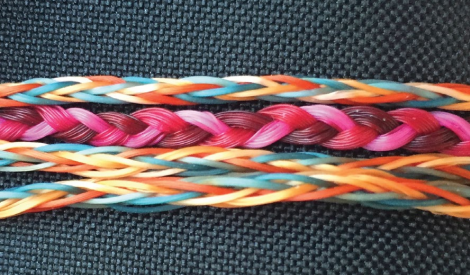The Future of Innovative Materials: Making People’s Lives Greener and Cleaner
From fashion to food packaging and homebuilding, a wide variety of materials are used in every aspect of our lives. And in response to the shortage of raw materials, startups are beginning to look for more sustainable and renewable alternative materials to solve this problem. In this story, we introduce you to solutions for clothing, product packaging and construction that help the material value chain become more sustainable.

- Each kg of recycled cotton can save 20,000 liters of water.
- The building materials industry is expected to grow as much as 130% within five years.
- In 2018, single-use packaging alone accounts for over 40% of global plastic production.
- It is estimated that in 2019, the net income of the entire material industry will reach 100 billion USD.

The fashion industry is facing a severe shortage of raw materials, while consumers continue to send discarded garments to landfills and incineration. In order to end this wasteful cycle, Reflaunt has established an online platform for consumers to resell second-hand clothes. In addition to extending the life of the garment, developing alternative materials from the source may be a more effective solution to the problem.
In previous issues, we featured startups seeking new sources of materials to produce textiles, including Orange Fiber, Pinatex and MuSkin who use food by-products to create plant-based silk and leather.
Startups are also exploring how to close the loop in the fashion industry by turning textile waste unto useful materials. The Swedish startup, re:newcell, has developed cutting-edge technology for recycling used cottn and cellulosic fibers, allowing for used jeans and t-shirts to be broken down into virgin materials. The US-based startup Evrnu has invented a similar solution that breaks down old textiles into new textile products, with the goal of achieving a "zero waste" future.
Traditional packaging products such as plastic bags, tapes and packaging films that require petroleum as a raw material take up to one hundred years to decompose, and the process of decomposition produces greenhouse gases. Mango Materials is a startup that addresses this issue by turning methane into sustainable materials.
The use of bioplastic is another way to reduce the negative impact of fossil-based products. Bioplastics are typically biobased or biodegradable products derived from plant-based materials like corn, sugarcane or cellulose which are being increasingly used in the industry. For example, Only Curls, a hair products company from London recently announced to switch all of its packaging to bioplastic made from sugar cane, vegetable oil or food waste.

It is the entire consumer goods sector, and not just the fashion industry, that uses an overwhelming amount of packaging which ultimately ends up in landfills. In some cases, packaging is used purely for marketing or promotional purposes, rendering it unnecessary. However, producers still need to use a certain amount of packaging materials in parts of the supply chain such as transportation and storage.
"THE USE OF SUSTAINABLE MATERIALS IN THE CONSTRUCTION INDUSTRY ALSO HELPS TO REDUCE CARBON FOOTPRINT."
Construction is another industry that is a heavy user of different materials. Mass production of cement, steel and glass creates significant air pollution and toxic waste.
In the fashion world, we have seen customized 3D woven jeans being developed by startups like Unspun. Additive manufacturing allows the construction industry to produce building materials waste created during construction. Bioplastics are not limited to producing packaging. the Dutch startup, Aectual, uses 3D printing technology to produce marble-looking bioplastic flooring. Since its products come in all shapes and sizes, customers can order the exact amount according to the size of their homes, reducing waste.
The use of sustainable materials also helps reduce the carbon footprint in concrete production. The German company Cobiax developed an air pocket made of recycled plastic which can be a substitute for concrete. Through incorporating its air pockets into concrete slabs, construction companies can reduce their concrete usage by up to 30%. As a result, 90,000 tons of CO² will be relieved when every one million tons of concrete is saved.